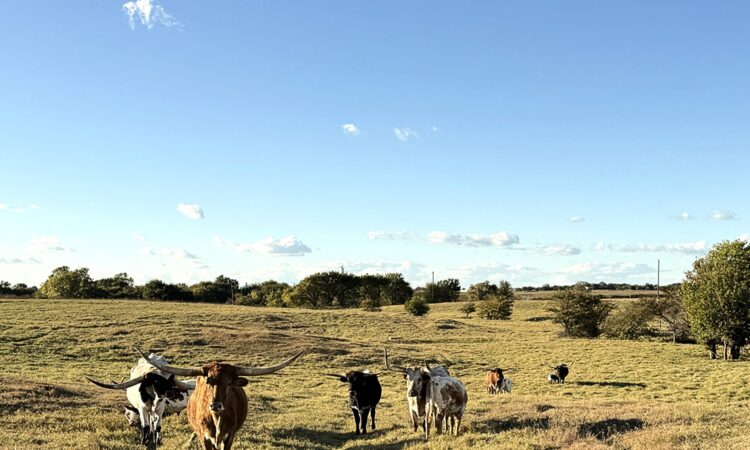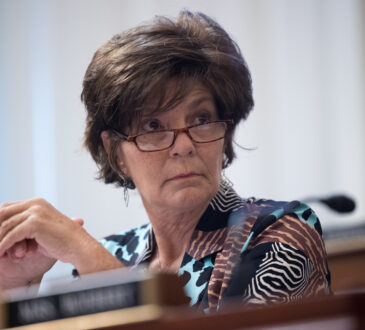
Summary:
– Oklahoma exported $349.9 million in beef and veal in 2020.
– Oklahoma beef and veal exports hit $433 million in 2023.
– Beef production contributes about $2.7 billion to Oklahoma’s economy.
– Families or individuals own 91% of Oklahoma beef farms.
Sticker shock at the meat counter? Brace yourself.
Jaw-dropping beef prices will continue for years – and will probably increase – said cattle market expert Derrell Peel.
“We’re going to have record high beef prices for quite some time,” said Peel, Oklahoma State University agribusiness professor and livestock marketing specialist. “And by that I mean, probably they’re going to be elevated at least for two to four years.”
Cattle prices have already blown the roof off the barn.
“They’re record high,” Peel said. “Record high and very volatile right now. Very, very uncertain.”
Consider Peel’s favorite cut of meat, the rib-eye steak.
Over five years, rib-eye steak jumped from about $13.13 per pound to around $25.59 per pound, considering the retail markup that ranges from 50% to 100+%, sometimes up to 300%.
President Donald Trump‘s plan to try to lower beef prices by increasing beef imports from Argentina has sparked an uproar.
One rancher posted on X that the plan was “an absolute betrayal to the American cattle rancher.”
Trump answered the commotion on his Truth Social platform:
“The Cattle Ranchers, who I love, don’t understand that the only reason they are doing so well, for the first time in decades, is because I put Tariffs on cattle coming into the United States, including a 50% Tariff on Brazil. If it weren’t for me, they would be doing just as they’ve done for the past 20 years – Terrible! It would be nice if they would understand that, but they also have to get their prices down, because the consumer is a very big factor in my thinking, also!”
Letting more foreign beef bolt into the U.S. simply should not happen, said a local rancher.
“President Trump should not be intervening in something that he doesn’t understand. And he doesn’t understand the cattle market and how it works,” said Vickie Downing-Boyd, as she checked her Longhorn beef cattle grazing outside Okarche.
The White House confirmed Trump’s plans last week to quadruple Argentine beef imports. This followed the U.S. $20 billion currency swap to help Argentina’s struggling economy.
But the US Department of Agriculture also announced long-term plans to help increase the small herd size in America, among other measures for domestic beef producers and consumers.
What’s the beef?
“Glutting the market with imported beef is going to do nothing but harm the ranchers that raise cattle,” Downing-Boyd said.
And the Argentine beef import plan won’t lower prices much, if any, experts say.
“Our best economic models indicate it might lower the (ground beef) price 6, 7, 8 cents a pound,” said Michael Kelsey, Oklahoma Cattlemen’s Association executive vice president.
“It shook the market,” Kelsey said of the announcement. “That’s our biggest angst with these types of discussions.”
Downing-Boyd said she saw the futures cattle market crash on Trump’s announcement.
A heifer lost $80 in value from one week to the next, she said. So, if a larger rancher sold 200 head of cattle, the potential loss would be around $16,000.
Why more Argentine beef won’t help
Argentina represents only about 2% of imports to America. But Peel said it will be even smaller because Argentina has already been exceeding its quota. Also, he expects much larger player, Brazil, will soon report dramatically lower imports to America due to high tariffs.
Brazil’s lower numbers will more than offset any possible increase from Argentina, Peel said.
“The effect of all of that is Argentina is not going to have any impact on beef prices in the US,” said Peel.
Why so high?
“We really downsized the national herd,” said Kelsey, whose family operates their Hereford cow/calf operation in central Oklahoma. “And so it just takes time for us to build that herd back up.”
The situation has been building for several years.
“We call it a 10-year cattle cycle,” Peel said.
Cattle were plentiful – meaning lower meat prices – in 2019. Then, drought moved into much of cattle country from 2021 into early 2025.
The cattle business was already in the liquidation phase. Then drought and high feed costs forced ranchers to sell even more cattle. Heifers that would have otherwise raised calves were also sent to slaughter, squeezing future herd numbers.
“So,” Peel said, “we have the smallest US beef cow herd since 1961.”
“The numbers are tight,” he said. “So we can expect to see our meat prices rise.”
Importing beef artificially stuffs the national grocery basket, Downing-Boyd said.
“All it does is take away from the farmer that has suffered through losses, the drought, the fires.
“And right now, because our beef cattle are extremely low in numbers, that’s the only reason why the beef is high right now,” she said.
What should the government do?
Meat prices aren’t about Argentina, Peel said.
The answer to lowering meat prices: Rebuilding the country’s herd.
“The USDA has announced a number of other things, all under the umbrella of trying to stimulate rebuilding the herd,” Peel said.
“But the fact of the matter is, there’s nothing they can do.
“None of it will have any impact on the timeline of herd rebuilding,” he said.
It takes about 2 ½ to 3 years to go from a bred heifer to calf to pot roast.
Oklahoma ranches export around $433 million in beef, placing the state number seven nationwide.
The government can help ranchers by staying out of the marketplace, Kelsey said.
“Let the marketplace work. Consumers have told us they love our product,” he said. “They’re willing to pay for it. Let them tell us, ‘Hey, we’re going to quit buying your product.’ They’re not telling us that yet.”
Downing-Boyd agrees that the government should step back.
“The ebb and flow of the market is forever… By intervening,” Downing-Boyd said of Trump, “he’s harming the ranchers right now.”




